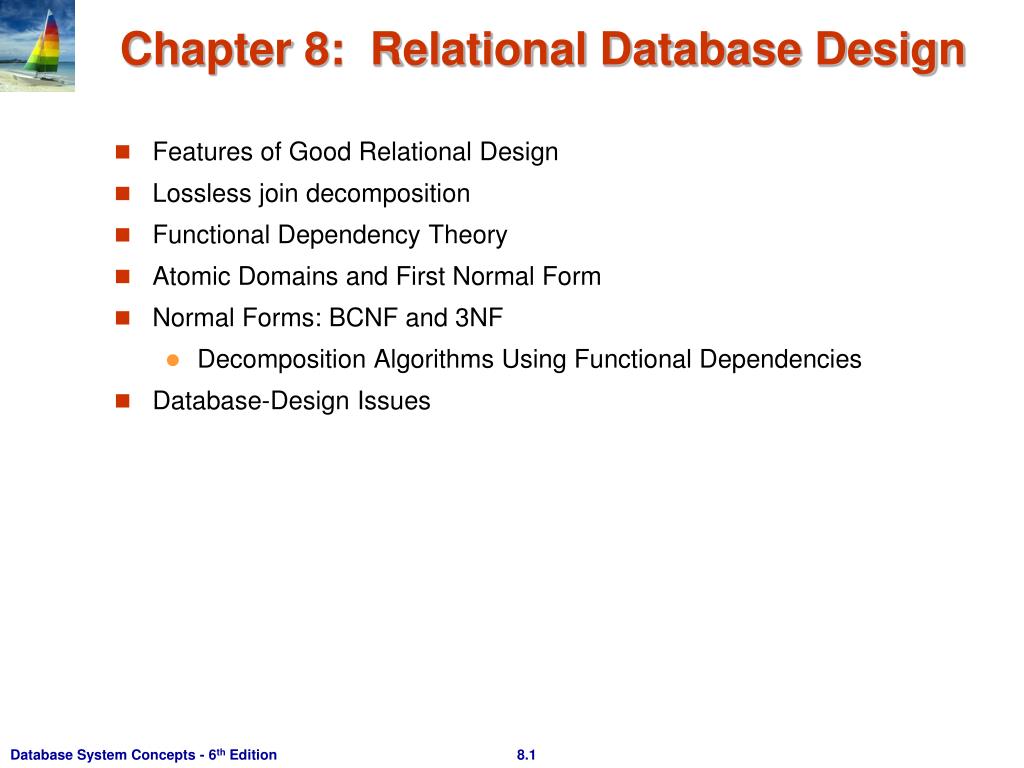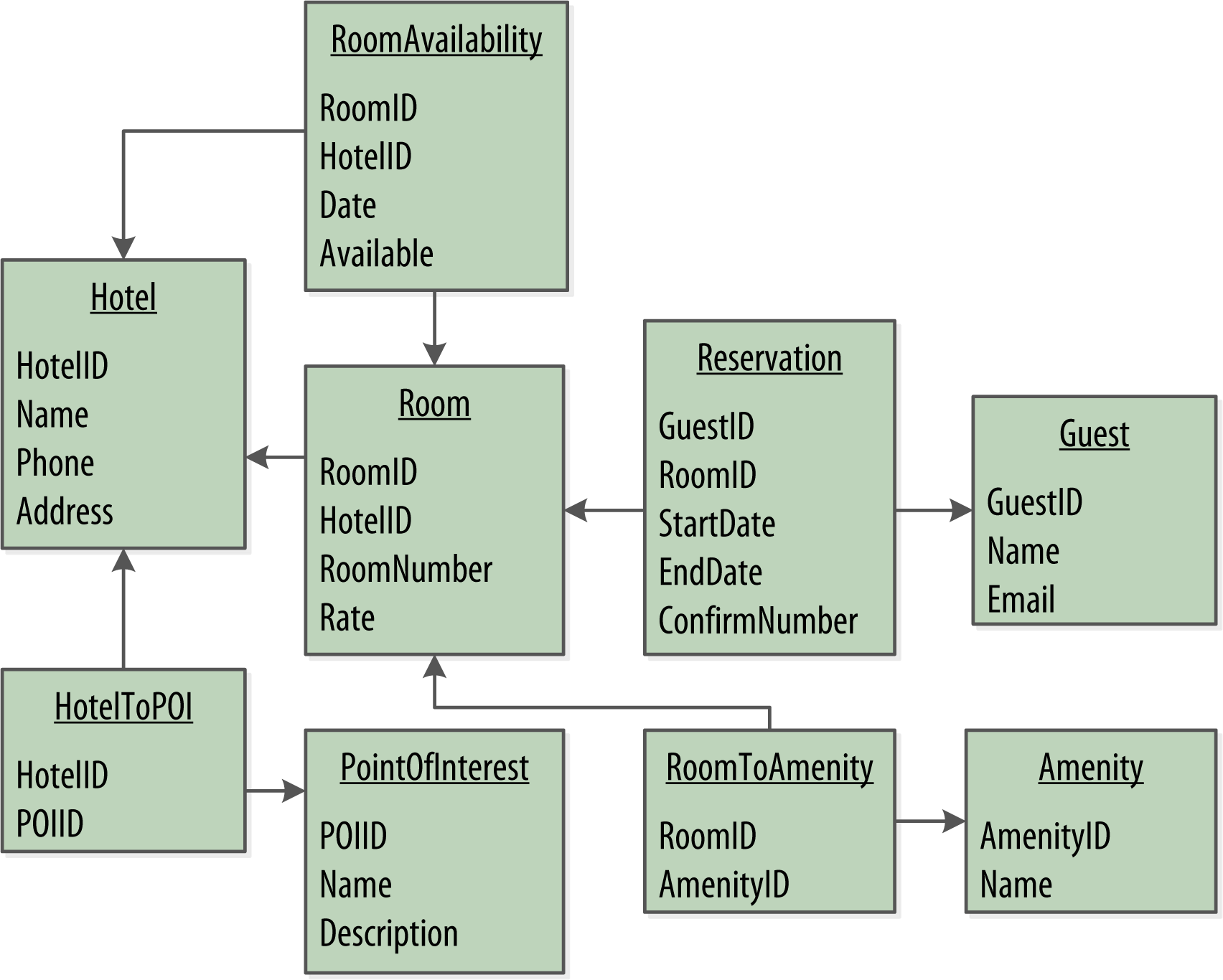Table Of Content

I hope the authors continue to add more content, improvements and updates. I will recommend this book to both my colleagues and students and can't wait for the next edition. The author does a good job of breaking down the chapters into smaller sections, each clearly identified with proper headings. This is of great benefit to instructors and students alike when teaching an introductory database course. It starts by providing information about the background and evolution of databases with clear explanations of the basic concepts, then progresses into modeling/design theories, normalization, and finally SQL. It's a very clear progression of topics, which makes it easy for a novice to learn and comprehend.
Introduction to SQL
Relational databases are used to track inventories, process ecommerce transactions, manage huge amounts of mission-critical customer information, and much more. A relational database can be considered for any information need in which data points relate to each other and must be managed in a secure, rules-based, consistent way. Over time, another strength of the relational model emerged as developers began to use structured query language (SQL) to write and query data in a database.
What Is Relational Database Management System?
On the other hand, your physical data design model translates this logical design onto physical media using hardware resources and software systems such as a DBMS (Database Management System). By 1983, IBM introduced the DB2 family of relational databases, so named because it was IBM’s second family of database management software. Today, it is one of IBM’s most successful products, continuing to handle billions of transactions every day on cloud infrastructure and setting the foundational layer for machine learning applications. This is a design pattern where each class in a hierarchy has its own database table, and the tables are linked by foreign keys. However, CTI is a technique used to represent a hierarchy of classes in multiple tables by using inheritance relationships between tables.
Step 2: Analyze data requirements
Top 10 Database Certifications For Your Career in 2024 - Datamation
Top 10 Database Certifications For Your Career in 2024.
Posted: Tue, 02 Jan 2024 08:00:00 GMT [source]
The naming of the attributes for some relations in the relational model chapter is not very descriptive in some cases. Now, I’ll be the first one to admit that learning database design can seem daunting at first glance. There’s an array of elements like entities, relationships, constraints and more to wrap your head around. But let me assure you, once you’ve gotten the hang of it all, it’ll be as easy as pie.
NoSQL: System Design Cheat Sheet - hackernoon.com
NoSQL: System Design Cheat Sheet.
Posted: Mon, 30 Oct 2023 07:00:00 GMT [source]
Hence, relations database need to store data in a highly structured way. This enables faster indexing and query response times and makes the data more secure and consistent. Introduce and train students with how to build conceptual entity relationship models. An audit log is a record of events or actions that occur in a system or application, such as user activities, system changes, security incidents, or errors. An audit log can help monitor and track the behavior and performance of a system or application, by providing information such as who did what, when, where, and why.
Ready to get started?
Stored procedures can also help developers ensure that certain data functions in the application are implemented in a specific way. In this module, you will first learn about the fundamental aspects of data structures and file formats, along with the differences between relational and non-relational databases. You’ll explore various types of data models and discuss fundamental concepts in database management.

Sometimes the book feels a bit "too dry" and this might negatively impact a student's motivation when reading it. However, the nature of the topic area is such that understanding fundamental concepts discussed in earlier chapters is necessary for grasping the concepts discussed in later chapters. This dependency is unavoidable and authors have done a good job in making the book chapters as modular as possible. Due to the comprehensiveness & modularity of each chapter, each chapter can be used as a single source of class material independently or minimum reference to other chapters. This model extends the hierarchical model by allowing each child to have multiple parents, thus creating a network-like structure.

An Example of Logical Design
A record will only be created for those products with optional data. The two tables, Products and ProductDetails, exhibit a one-to-one relationship. That is, for every row in the parent table, there is at most one row (possibly zero) in the child table.
Terms were presented in the appropriate order and the text was not verbose. It has the properly communication for a novice database person getting into the field.The book give a great introduction to database and is clear throughout. Better to add some more brief introduction on non-traditional databases and maybe some compact comparison table as well. The book is accurate and follows the conventions used in other popular references in the data base management system field. While technically fairly accurate, this book falls short in some important dimensions of relevance and cultural sensitivity. I think the treatment of the subjects is uneven, redundant in some places, very high level in others, and of more depth than necessary in yet others.
I suggest merging it with another chapter, perhaps with Chapter 13 that talks about software engineering in the context of database systems. To assist instructors in teaching a course who want to adopt this book, I would request adding extensive exercises (along with an instructor's solution manual) and test bank to accompany the book. Ideally, if these materials can be easily integrated into standard course management systems, it would ease the book adoption process. Clarity and simplicity are perhaps the key strengths of this book. I like the simple explanations and examples provided by the authors that can help students quickly grasp the gist of the concepts in an intuitive manner. The core concepts in the book will be very relevant for the next several years.
Also, vocabulary is used to add to the database literacy of the student. The book is error-free but some exercises are Microsoft biased (e.g., the first exercise at the end of Chapter 16 requires students to download an MSI file). This problem can be easily modified by providing an .sql source file with the database schema for the exercise.
The recent advances in the database design should be incorporated. The book is broken down well into many chapters and digestible chunks of thought that are easily builds upon previous learning.the various chapters do a great job breaking down the database knowledge. Even though cloud databases have existed since 1996, their use is now only becoming mainstream, but the basics of databases remains in tact.It does not include GIS or apps as extensions of databases in 2017. It give a sound history and need for database without picking one other the other. It provide a clear and unbiased history of data effort and societal engagement with data.It give a good scope of data base design.
From my personal experience teaching databases, discussing relational algebra makes it easier for students to later grasp SQL joins. Other topics that I would have liked to have seen covered by this book are triggers, stored procedures, indexes, SQL DCL, security, database programming, and NoSQL. Over the years, relational databases have gotten better, faster, stronger, and easier to work with. But they’ve also gotten more complex, and administering the database has long been a full-time job. The simple yet powerful relational model is used by organizations of all types and sizes for a broad variety of information needs.
NoSQL databases provide flexibility for storing varied types of data without requiring predefined schemas – a game changer for businesses dealing with diverse datasets. The process involves two primary stages – logical and physical data models. The logical model focuses solely on what data needs to be stored without considering how or where it will be physically stored. On the other hand, the physical model translates this logical design onto physical media using hardware resources and software like DBMS.
On the other hand, in banking and financial transactions, an error and resubmit may be better than old, incorrect information. However, Oracle’s adoption of SQL also didn’t hurt its popularity with database administrators. These are all important and we will have to handle each of these in our database. For the sake of this article I will make the simplifying assumption that each client has one office, and the courses take place there (if they don’t take place at the school itself).

No comments:
Post a Comment